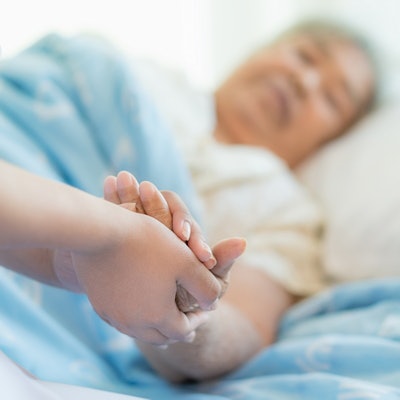
Women who live more than 10 years after a diagnosis of breast cancer are more likely to die of diseases other than cancer, such as heart and cerebrovascular diseases, according to a large study published online on December 16 in Cancer. Researchers attribute the finding to improved therapies that are enabling women to survive longer.
A research team from Egypt and the U.S. studied more than 750,000 women diagnosed with breast cancer in the U.S. between 2000 and 2015. They found that of women who died from breast cancer, most deaths occurred within one to five years after diagnosis. But for those who survived, the most common cause of death after 10 years was heart disease, followed by Alzheimer's disease.
"Although death from breast cancer was the most common cause of death initially after diagnosis, its frequency decreased over time to be overcome by nonbreast cancer causes of death, which became most frequent >10 years after diagnosis," wrote the research team, led by Dr. Ahmed M. Afifi from the faculty of medicine at Ain Shams University in Cairo.
Other deaths
In the past 40 years, mortality rates from breast cancer have dropped and patients may live long enough after a breast cancer diagnosis that noncancer-related comorbidities may significantly affect their overall survival. The current study by Afifi and colleagues is the largest and most recent population-based, long-term analysis to date of noncancer causes of death.
The researchers followed patients for more than 15 years and looked at possible associations between tumor-related and demographic-related characteristics and the risk of various noncancer deaths. The researchers included 754,270 U.S. women with breast cancer diagnosed from 2000 through 2015 and retrieved through the Surveillance, Epidemiology, and End Results (SEER) program.
Nearly a quarter (24.3%) of patients died during the follow-up period, and the greatest proportion of deaths (46.2%) occurred within one to five years after diagnosis. Conversely, 16.3% of the deaths occurred within less than a year of breast cancer diagnosis. While over 50% of women who died within the first five years of diagnosis died of breast cancer, that percentage dropped to less than a quarter among those who survived 10 years.
| Causes of death in breast cancer survivors | |||
| No. of years after breast cancer diagnosis | |||
| 1-5 years | 5-10 years | Over 10 years | |
| Percent of deaths from breast cancer | 58.6% | 38.2% | 23.6% |
| Percent of deaths from other cancers | 8.9% | 13.4% | 15.5% |
| Percent of deaths from noncancer causes | 32.4% | 48.4% | 60.9% |
Cerebrovascular deaths included deaths from stroke, intracranial hemorrhage, and other related causes.
The researchers also found that patients diagnosed with breast cancer between the ages 40 and 64 -- as well as black patients with breast cancer -- seemed to have a higher risk of septicemia and cardiac disease within the first year after diagnosis compared with the general U.S. population. White patients had a statistically significant higher risk of death from chronic liver diseases and cirrhosis within the first year after cancer diagnosis compared with the general U.S. population, whereas Native American/Alaska Native patients had a significantly higher risk of death from chronic obstructive pulmonary disease.
In the Asian population, deaths from heart and cerebrovascular diseases were among the most common causes of nonbreast cancer deaths, in addition to aortic aneurysm and dissection, according to the authors.
"The overall outcomes and survival rates of patients with breast cancer have significantly improved in the U.S. throughout the last two decades," the authors wrote. "This could be attributed to better treatment modalities (specifically systemic therapies) in both adjuvant and palliative settings. Therefore, patients are living longer after a breast cancer diagnosis to a point at which other morbidities and mortalities significantly affect their overall survival; hence, it is crucial to address deaths from nonbreast cancer causes when counseling patients about prognosis and survivorship."
Afifi and colleagues added that the study emphasizes the importance for breast cancer survivors of following proper screening and preventive measures for other cancers.
Study limitations include bias that may have been introduced because of the retrospective nature of the analysis. Also, some causes of death may be underreported or misreported -- some causes of death in the registry may have been captured under other causes of death.



















